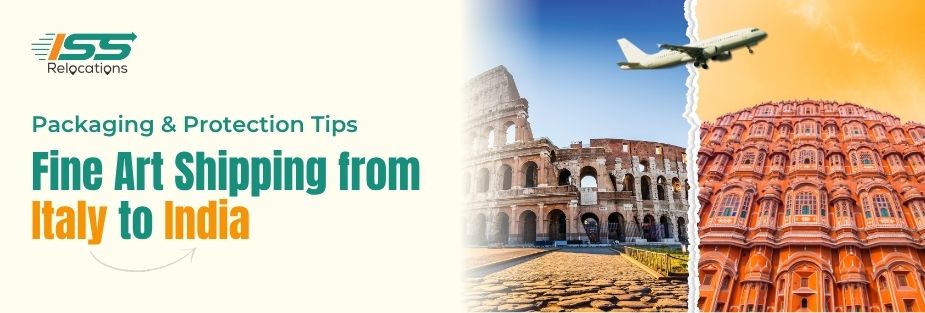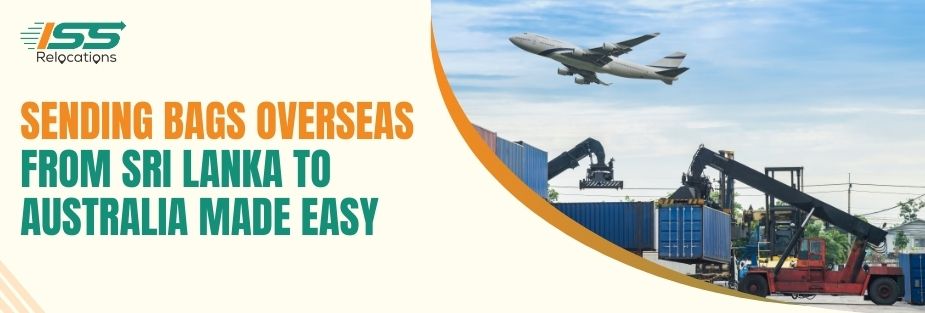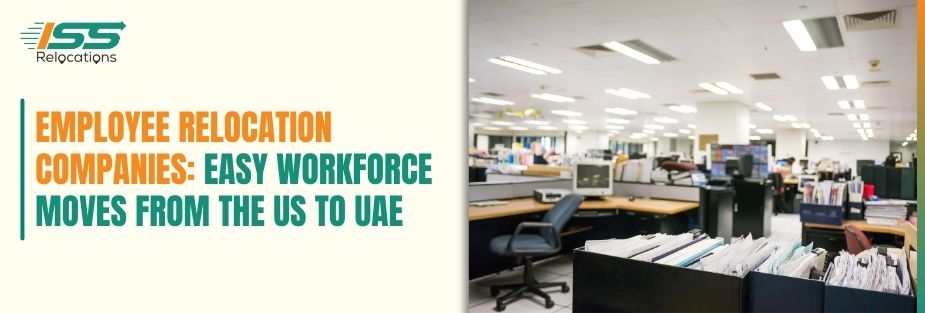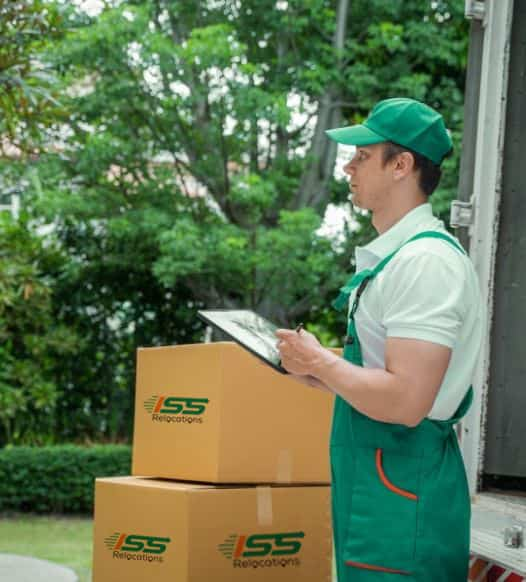
Fine Art Shipping from Italy to India: Packaging and Protection Tips
Fine art shipping has become an essential service in the global art market, especially for collectors, galleries, and museums moving works across borders. With Italy being a hub of classical and contemporary art, and India emerging as a fast-growing market for cultural exhibitions and private collections, the demand for international transport of artworks between these countries is steadily increasing.
Shipping valuable art through fine art shipping is not as simple as packaging and dispatching regular goods. These pieces often carry immense cultural, historical, and financial worth. This makes the logistics more complex and the packaging more meticulous. From securing climate-controlled containers to ensuring white-glove handling during transit, every step must be executed with precision.
At ISS Relocations, we understand the delicate nature of art logistics. Our specialized approach combines expert knowledge, custom solutions, and compliance with international regulations to make the experience seamless for our clients. Whether it’s a centuries-old painting or a modern sculpture, we ensure its journey from Italy to India is handled with unmatched care and professionalism.
Ship Fine Art Safely
Get expert fine art handling, packing, and shipping support from Italy to India with maximum protection and care.
Understanding Fine Art Shipping: What Makes It So Specialized?
Fine art shipping is not just about transportation—it’s a curated process that requires a high level of expertise, precision, and respect for the artwork. Unlike traditional freight services, this niche involves dedicated tools, trained professionals, and a deep understanding of the materials and fragility of each item.
The Difference Between Fine Art and General Cargo
Fine art pieces are not uniform in size, shape, or weight. Some might be canvas-based and fragile, while others might be sculptures made of heavy metals or delicate ceramics. Traditional cargo methods fail to offer the tailored protection needed for such diversity. This is where fine art shipping stands apart.
Unlike commercial goods, artworks can suffer irreversible damage from minor jolts, humidity changes, or improper packaging. That’s why fine art transport includes custom crating, microclimate control, and expert supervision at every stage.
Types of Artwork Typically Shipped
The range of items involved in fine art shipping is vast. Paintings are among the most common, often requiring moisture-resistant wrapping and rigid casings. Sculptures may need padded mounts and stabilization within crates to prevent movement. Photographs, antique furniture, and mixed media installations each demand unique handling methods. Art shipping galleries often deal with bulk shipments containing diverse items that all need custom packaging.
The Role of Expertise in Shipping Fine Art
Not every logistics provider is equipped for fine art transport. It involves trained personnel capable of assessing the condition, structure, and needs of each piece. From museum acquisitions to gallery exhibitions, art handling service providers must adapt to the nuances of different artwork types. This includes everything from installing sensors within crates to maintaining an unbroken chain of custody throughout the shipping process.
Fine art shipping companies like ISS Relocations invest in this kind of expert support, ensuring every stage of the process is tailored for preservation, safety, and compliance.
How to Prepare Artworks for International Shipping
Preparation is one of the most critical steps in the success of fine art shipping. Without proper groundwork, even the best transport arrangements can fall short. From initial assessments to final documentation, every detail matters when shipping artwork from Italy to India.
Pre-Shipment Assessment
Before fine art shipping preparation begins, it’s crucial to evaluate the current state of each artwork. This involves a detailed condition report, documenting every visible detail. High-resolution photographs are taken to record existing marks, damages, or variations in texture. These visuals serve as a reference point if any disputes arise later.
Art owners should also seek formal appraisals. These documents are important for customs valuation and for determining the level of insurance coverage needed during fine art transport. Many professional art handling service providers, including ISS Relocations, assist with this phase to streamline the shipping journey.
Choosing the Right Packaging Materials
Materials used in fine art shipping packing can mean the difference between preservation and permanent damage. Acid-free tissue paper, glassine, and Tyvek are common choices for paintings, offering surface protection without causing chemical reactions. Bubble wrap should be avoided directly on painted surfaces, as it can stick or leave impressions.
Sculptures and other three-dimensional items benefit from custom foam inserts that cushion against shocks. Every crate must be lined with shock-absorbent materials and sized exactly to the dimensions of the artwork. This level of detail is essential when handling shipments for art shipping galleries, where volume and variety go hand in hand.
Custom Crating Tips
Creating a crate for fine art shipping isn’t just about enclosing the artwork; it’s about building a protective environment. Wood used in crating must be treated and certified according to ISPM 15 standards for international shipping. Crates should also include humidity indicators and, when needed, desiccants to manage moisture levels.
Crate design must reflect the nature of the art. For flat pieces, layered support and compression padding are vital. For sculptures, internal bracing prevents movement. These crates are then marked clearly with handling instructions and orientation signs to ensure safe transport.
Labeling and Documentation
Every fine art shipping project requires accurate and detailed documentation. Customs clearance in both Italy and India depends heavily on these papers being error-free. A proforma invoice, packing list, and condition report are standard. For certain works, a certificate of authenticity or export clearance from Italy’s cultural ministry may also be necessary.
Correct labeling plays a critical role in transit safety. Markings such as “Fragile,” “Do Not Stack,” or “Keep Upright” help handlers maintain proper orientation and avoid common shipping mistakes. ISS Relocations offers full documentation support as part of its comprehensive art handling service, ensuring smoother customs interactions.
Read Also: Moving Furniture Overseas: Top Companies for UAE Relocation
Best Practices in Fine Art Transport from Italy to India
Fine art shipping requires a strategic approach that blends precision logistics with specialized knowledge. When artworks travel internationally—especially across diverse climates like those of Italy and India—the margin for error narrows significantly. Following best practices helps minimize risk and ensures that every piece arrives in perfect condition.
Selecting an Experienced Art Handling Service
Choosing the right logistics partner is one of the most crucial decisions in the fine art shipping process. Not all freight companies are equipped to handle sensitive artworks. A reliable art handling service offers more than transportation; it provides professional packing, climate regulation, insurance guidance, and international compliance support.
An experienced partner like ISS Relocations brings expertise across all areas of fine art transport. From consulting on packaging materials to ensuring temperature-controlled shipping, the focus remains on safety and preservation. These providers understand the specific challenges of moving artwork between Italy and India, including regional climate shifts and customs complexities.
Using Temperature and Humidity-Controlled Vehicles
Fluctuations in temperature and humidity are among the most common causes of damage during fine art shipping. Paintings can warp or crack, and sensitive materials like canvas and paper may react to excess moisture. For this reason, artworks must be transported in vehicles that maintain constant interior conditions.
Fine art transport requires not just insulated crates, but also climate-controlled trucks or containers equipped with real-time monitoring. This is particularly important when artworks are destined for open-air exhibitions or long-term displays in art shipping galleries in India. ISS Relocations uses sealed and regulated vehicles to maintain ideal conditions from point of origin to final destination.
GPS and Security Tracking
Security is another essential element in the fine art shipping process. Artworks often hold considerable monetary value, making them vulnerable to theft or mishandling. Modern shipping solutions include GPS-enabled tracking systems that provide live updates and allow clients to monitor the progress of their shipment.
These systems are supported by secure loading and unloading zones, tamper-proof seals, and photo documentation at each handling point. With the help of an established art handling service, clients can benefit from high-level surveillance without interrupting the shipment timeline. ISS Relocations integrates these security protocols as part of its fine art transport offering, ensuring complete transparency and peace of mind.
Dealing with Customs and Import Regulations in India
One of the most overlooked yet critical parts of fine art shipping is navigating customs. Shipping artwork from Italy to India involves multiple documentation layers, valuation assessments, and regulatory approvals. Errors or omissions in this stage can cause delays, penalties, or even the confiscation of items.
Customs Declaration Requirements
Every piece of art involved in fine art shipping across international borders must be declared properly at customs. In India, this involves using the correct Harmonized System (HS) code, which categorizes goods based on material and purpose. For artworks, the codes vary depending on whether the piece is a painting, sculpture, or photograph.
Accurate declarations must also include the value of the item, the artist’s name, and detailed descriptions. These documents are cross-referenced by Indian customs officials to assess duty charges and ensure authenticity. An experienced art handling service like ISS Relocations simplifies this by offering end-to-end documentation support, including customs paperwork preparation and regulatory checks.
Import Duties and Taxes
Import duties in India for artworks vary depending on their classification and purpose. Private collectors, museums, and art shipping galleries may each be subject to different rates. Additionally, taxes like GST can apply on top of the import duty, depending on the artwork’s declared value and origin.
Failing to account for these charges can result in unexpected expenses at the port of entry. To avoid complications, fine art shipping professionals recommend working with a logistics provider that understands both Italian export rules and Indian import taxation. ISS Relocations not only offers pre-arrival cost breakdowns but also handles duty payments on behalf of clients when needed.
Cultural Property Restrictions
India has strict regulations regarding the import of artworks considered part of its national heritage. Although this typically applies to antiquities, similar scrutiny can extend to fine art shipping projects involving international art entering the country. Italian artworks, especially those created before a specific date or involving religious symbolism, may require additional scrutiny during customs clearance.
Clients shipping artwork from Italy must ensure their pieces meet all import eligibility criteria. Cultural property assessments can also influence the documentation process. Partnering with an expert in fine art transport—such as ISS Relocations—can help navigate these legal complexities and avoid unnecessary delays.
Fine Art Shipping for Galleries and Exhibitions
When it comes to large-scale exhibitions and gallery events, the logistics involved in fine art shipping become even more intricate. Art shipping galleries often manage high-value, multi-piece collections, each with specific handling needs and strict timelines. From organizing outbound transport from Italy to coordinating customs and unpacking in India, every phase must be flawlessly synchronized.
Coordinating Large Shipments for Art Shipping Galleries
Art galleries frequently need to ship numerous works at once, often involving various artists, mediums, and formats. Each piece requires a unique packaging strategy, making fine art shipping a complex task of coordination and precision. Inventory tracking plays a central role here, ensuring that each item is properly labeled, logged, and linked to its respective documentation.
Fine art transport professionals understand the logistical pressure of gallery timelines. Whether it’s an opening night in Mumbai or an international art fair in Delhi, timing is non-negotiable. ISS Relocations offers scalable solutions tailored to high-volume shipments, combining expert packing with custom scheduling and climate-conscious transport.
Setting Up for International Exhibitions in India
Fine art shipping for exhibitions involves more than just moving art from one location to another. Once the artworks arrive in India, they must be carefully unpacked, installed, and displayed according to curatorial specifications. This process includes site assessments, lighting considerations, and environmental conditioning—factors that go beyond basic transport.
A qualified art handling service can assist with onsite installation, using professionals trained in museum-quality techniques. These teams are equipped to manage every detail, from white-glove handling to ensuring artworks are hung or displayed safely. ISS Relocations works closely with gallery staff and curators to deliver not just the art, but the complete exhibition experience with precision and care.
The Role of Reverse Logistics
After an exhibition ends, reverse logistics becomes essential. The same attention applied during initial shipment must be repeated in reverse: artwork must be repacked, documented, and either returned to Italy or shipped to a new location. This cyclical flow of fine art shipping is particularly common for traveling exhibitions and gallery tours.
ISS Relocations supports art shipping galleries by offering full-circle logistics, from initial pickup in Italy to return coordination after events in India. This ensures consistency in quality, accountability, and handling throughout the entire transport lifecycle.
Read Also: Fine Art Transport Services Dubai: Crating & Insurance Tips
Common Mistakes to Avoid During Art Shipping
Despite the growing availability of professional solutions, many individuals and institutions still make critical errors when managing fine art shipping. These mistakes can lead to delays, damage, or unexpected expenses that could have been avoided with proper planning.
Skipping Condition Reports
One of the most common oversights is neglecting to conduct detailed condition reports before and after shipping. These reports serve as essential references in case of damage claims or customs inspections. In fine art transport, documentation of condition isn’t optional—it’s a protective measure for both sender and receiver.
Fine art transport providers like ISS Relocations always prioritize these assessments. Their teams photograph, document, and catalog every item before shipment, helping to eliminate ambiguity and streamline insurance procedures.
Schedule Your Art Pickup
Using Generic Packaging
Generic packaging materials are ill-suited for transporting fine art. Standard boxes, bubble wrap, or foam peanuts don’t offer the level of protection required for fragile surfaces or unusual shapes. This is particularly risky for sculptures, mixed media installations, and delicate canvas pieces.
Fine art shipping demands custom crating, designed specifically to match the artwork’s dimensions and vulnerability. Every crate should be engineered to absorb shocks, regulate humidity, and secure internal movement. An art handling service ensures these standards are met without compromise, maintaining the structural and aesthetic integrity of the work.
Ignoring Insurance Options
Another major mistake in fine art shipping is underinsuring the shipment or skipping insurance entirely. Fine art, due to its high monetary and emotional value, should never be transported without adequate coverage. This applies to both private collectors and art shipping galleries alike.
Comprehensive insurance protects against damage, theft, or loss during transit. At ISS Relocations, clients are offered tailored insurance plans designed specifically for fine art transport. These policies are underwritten by providers who understand the unique risks associated with global art logistics.
Choosing Cost Over Quality in Logistics Providers
Opting for a standard shipping company to save costs often leads to long-term losses. General freight services lack the specialized knowledge and equipment required for handling art. Mismanagement during loading, transit, or customs can cause irreversible harm.
Fine art shipping is an investment in preservation. Choosing an experienced provider like ISS Relocations ensures that artworks are not only delivered, but protected, respected, and legally compliant throughout the journey. Expertise in art handling service is non-negotiable when transporting cultural assets across continents.
Wrapping Up
Successfully managing fine art shipping from Italy to India involves more than just logistics—it’s a sophisticated process that combines specialized packaging, legal compliance, climate control, and professional oversight. Each phase, from pre-shipment evaluation to post-arrival installation, must be executed with precision to protect the integrity and value of the artwork.
Whether you’re a private collector, a museum, or part of art shipping galleries planning an international exhibition, understanding these processes is vital. Investing in expert fine art transport ensures that your pieces reach their destination intact, on time, and without unnecessary complications.
ISS Relocations offers comprehensive solutions for every stage of art logistics. From custom crating and condition documentation to climate-controlled transport and customs clearance, their experienced team ensures that every detail is managed with care. By partnering with a reliable art handling service like ISS Relocations, clients gain peace of mind knowing their treasured artworks are protected throughout their journey.
Frequently Asked Questions
How do you ship artwork internationally without damage?
Shipping artwork internationally without damage requires specialized materials, experienced handlers, and climate-controlled environments. Fine art shipping services like those offered by ISS Relocations use custom crating, moisture-resistant packaging, and real-time tracking to prevent harm. They also complete condition reports and provide insurance options to further protect valuable pieces during transit.
What is the best way to pack a painting for shipping?
The best way to pack a painting involves using acid-free paper, corner protectors, and a custom-built crate. A fine art handling service typically wraps the artwork in glassine, surrounds it with foam padding, and seals it in a wooden crate made to its dimensions. This prevents vibration, impact, and moisture exposure during fine art shipping across long distances.
Do I need special insurance for fine art shipping?
Yes, special insurance is highly recommended for any fine art transport. General freight insurance may not cover the full value or risks associated with fine art. ISS Relocations offers custom insurance policies tailored to the art’s value and travel route, providing financial protection against theft, loss, or damage during international transit.
How much does it cost to ship art from Italy to India?
The cost of fine art shipping from Italy to India depends on the size, weight, packaging requirements, value of the artwork, and selected transport method. Other factors like customs duties and climate-controlled shipping can also influence the price. ISS Relocations provides transparent quotes and custom solutions based on individual project needs.
What is the safest method to transport valuable artwork?
The safest method includes using professional fine art transport services that offer climate-controlled vehicles, GPS tracking, and custom crating. Every artwork should be individually packed and handled by trained experts to avoid mishandling. Art shipping galleries and collectors trust experienced providers like ISS Relocations for safe international movement of their pieces.
Can customs delay fine art shipments?
Yes, customs delays are possible if documentation is incomplete or artworks are incorrectly declared. Shipping artwork from Italy to India requires accurate paperwork, including condition reports, invoices, and certificates of authenticity. ISS Relocations ensures all documents comply with import and export laws, minimizing the risk of delays during fine art shipping.
What services do art shipping galleries typically offer?
Art shipping galleries often provide collection, packing, transport, installation, and return logistics for exhibitions. They may also coordinate with customs agents, offer storage solutions, and work closely with fine art transport providers to protect valuable collections. ISS Relocations partners with galleries to manage these end-to-end services across global routes.
Moving Company - Recent Blog
Stay informed and prepared for your next move with our latest blogs on moving services in the UAE. From expert packing tips to international relocation guides, ISS Relocations brings you up-to-date insights to make your moving experience smoother, safer, and stress-free.










